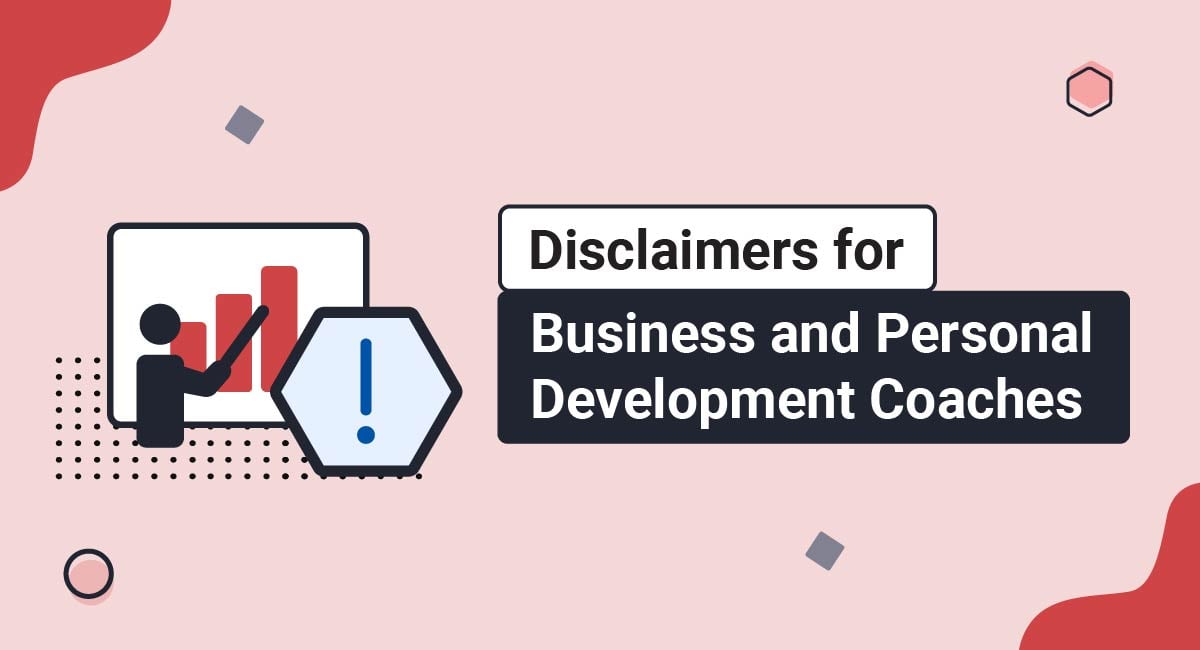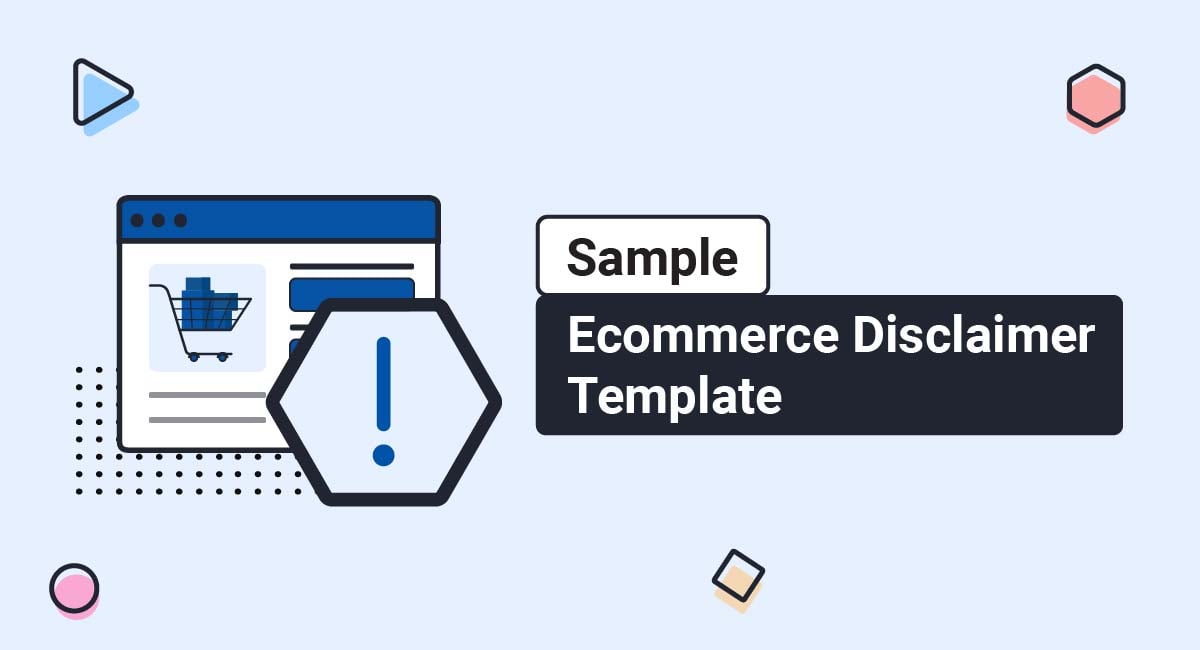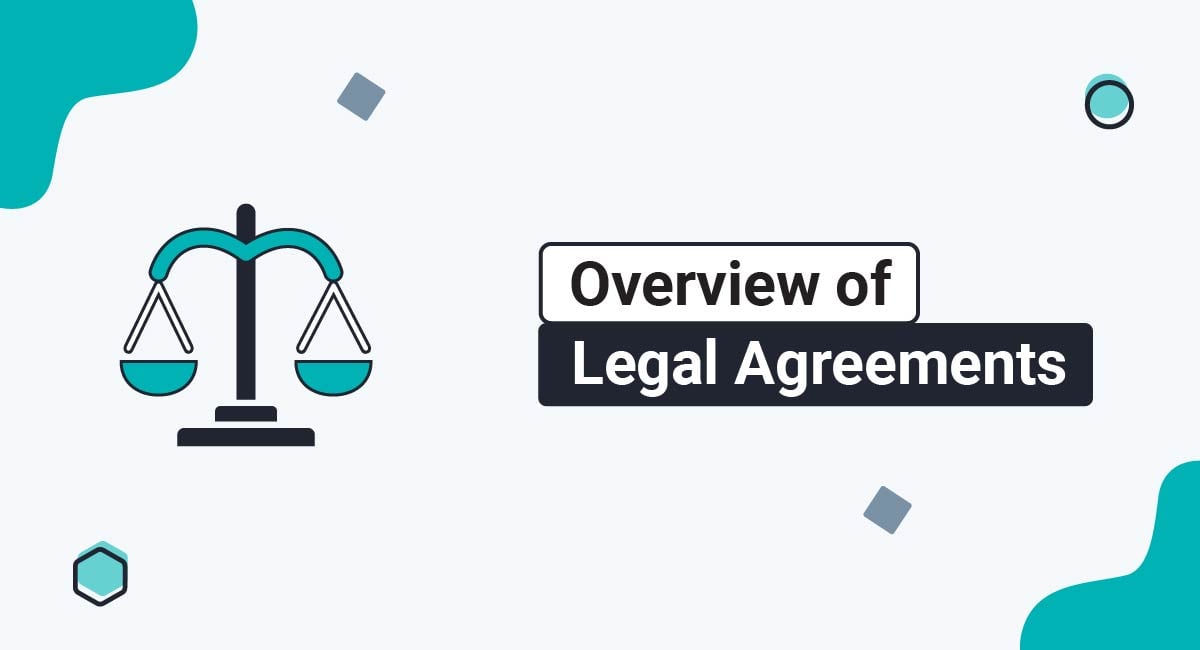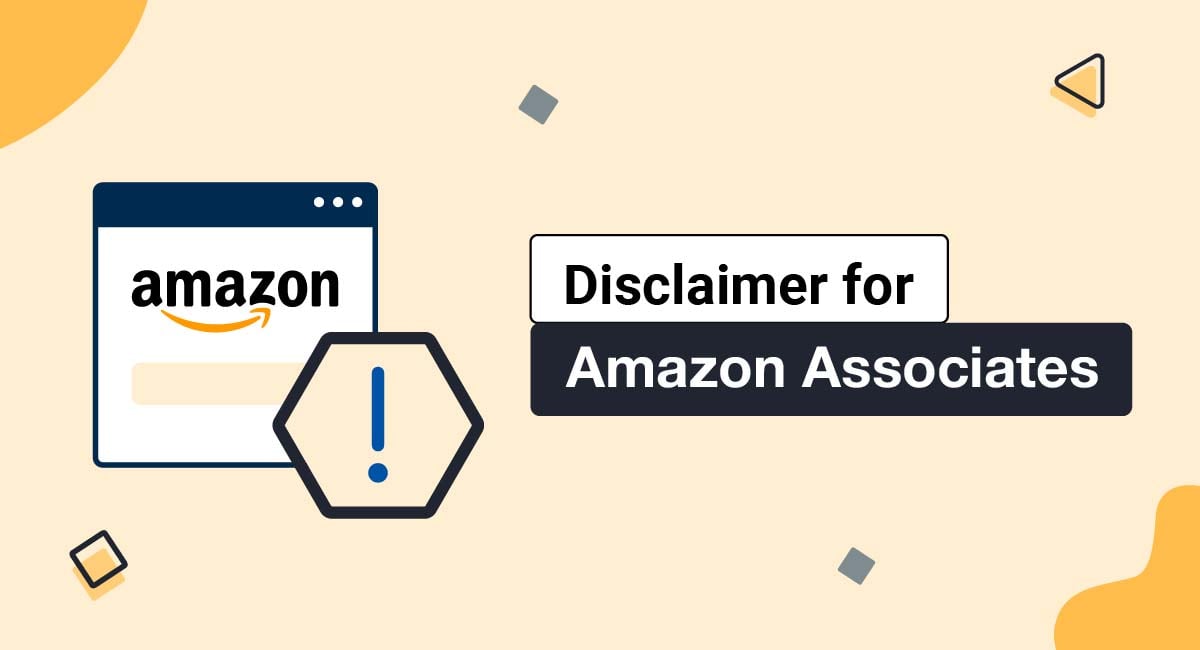As a business and personal development coach, you will need to include a variety of disclaimers with your website to help clients better understand your limitations and what to expect from you. Disclaimers can also assist you in explaining where your clients need to take responsibility.
This article will cover when and why business and personal development coaches need disclaimers, the various types they should be using, how to write disclaimers, and where to display them.
Our Disclaimer Generator can generate a legal disclaimer for your business, website or mobile app. Just follow these steps:
-
At Step 1, select where your Disclaimer will be used.
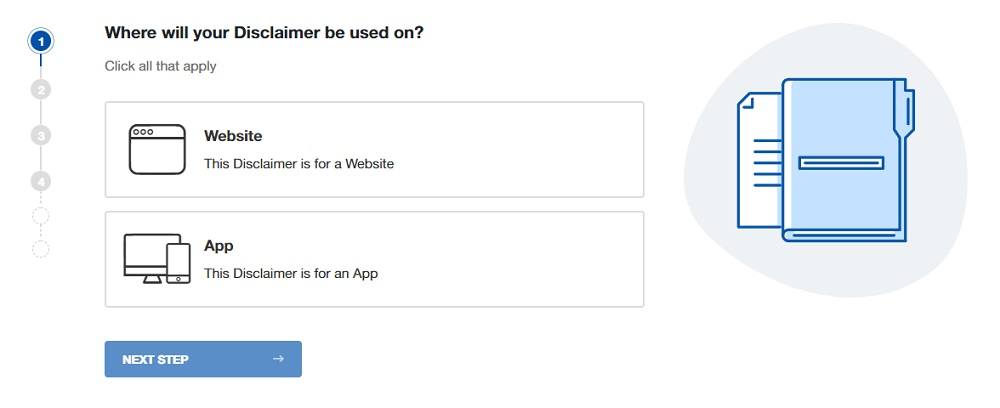
-
At Step 2, add in information about your website/app and business.
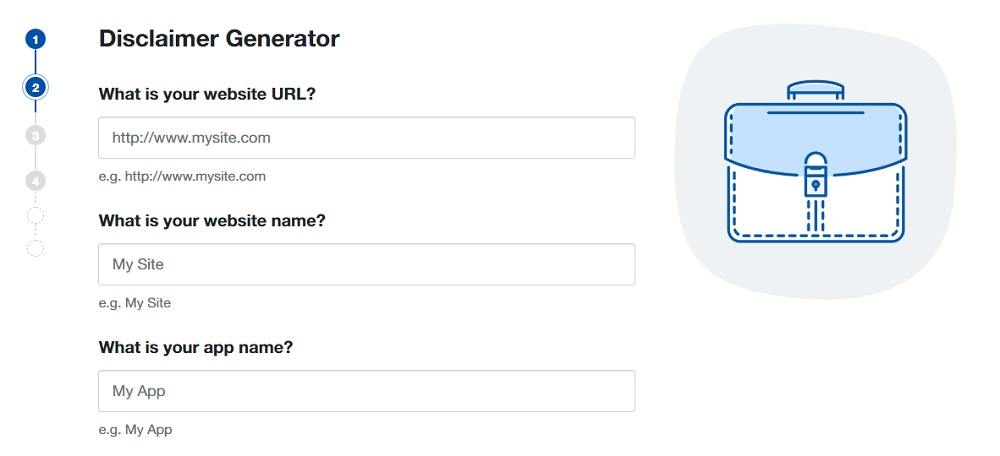
-
Answer some questions about your business practices.
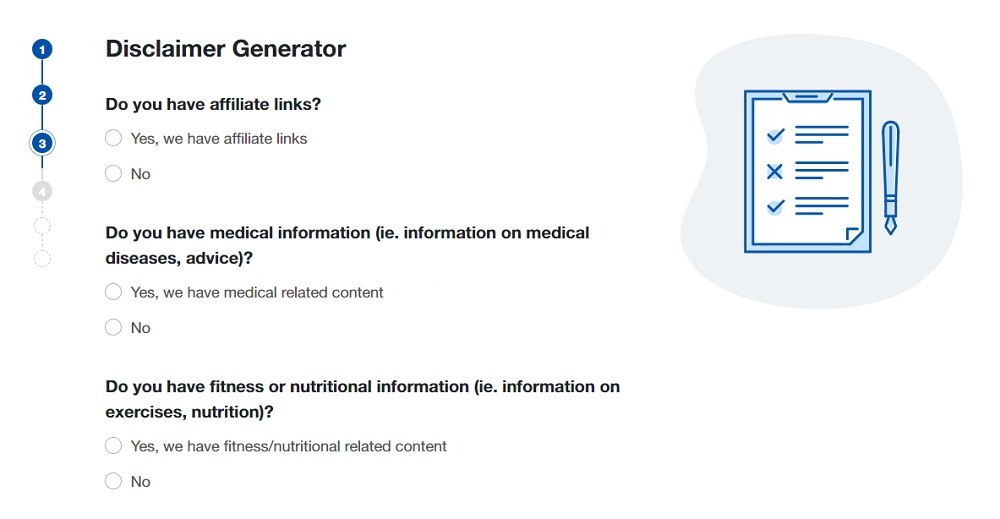
-
Enter an email address where you'd like to receive your Disclaimer and click "Generate."
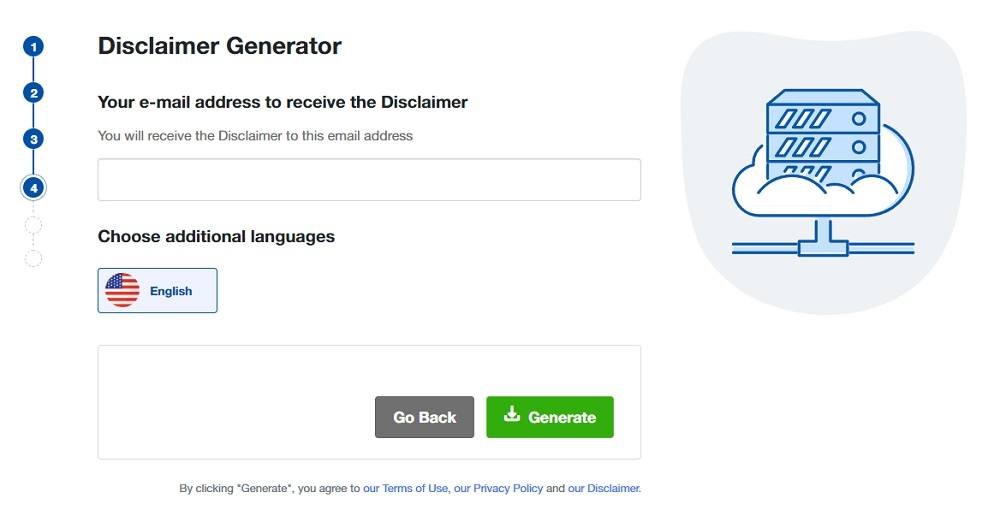
Done! You'll be able to instantly access and download your new Disclaimer.
- 1. What are Disclaimers?
- 2. Why Business and Personal Development Coaches Need Disclaimers
- 3. What Disclaimers are Best for Business and Personal Development Coaches?
- 3.1. Limited Liability Disclaimer
- 3.2. Legal Advice Disclaimer
- 3.3. Conflict of Interest Disclaimer
- 3.4. Third-Party Content and Links Disclaimer
- 3.5. Use at Your Own Risk Disclaimer
- 3.6. No Personal Relationship Disclaimer
- 3.7. Affiliate Disclaimer
- 3.8. Personal Views Disclaimer
- 3.9. No Guarantee Disclaimer
- 3.10. Earnings Disclaimer
- 3.11. Intellectual Property Rights Disclaimer
- 4. Where to Display Disclaimers for Business and Personal Development Coaches
- 4.1. In Your Website Footer
- 4.2. On a Separate Disclaimers Page
- 4.3. In a Terms and Conditions Agreement
- 4.4. In Your Ecommerce Store
- 4.5. On Your YouTube Channel
- 4.5.1. Option 1: Add Your Disclaimer to the Video's Description
- 4.5.2. Option 2: Add a Disclaimer to the Channel Description Section
- 4.5.3. Option 3: Add Your Disclaimer within Your Video
- 5. Summary
What are Disclaimers?
Disclaimers are statements that deny responsibility or liability for something. They are often used to limit the liability of businesses, organizations, and individuals concerning their products, services, or actions.
Disclaimers can be found in various contexts, including advertisements, websites, software, and contracts.
They are generally intended to protect the issuer from legal liability or limit their liability scope if a claim is made against them.
Here's an example of a disclaimer that would be used at the beginning of a video:
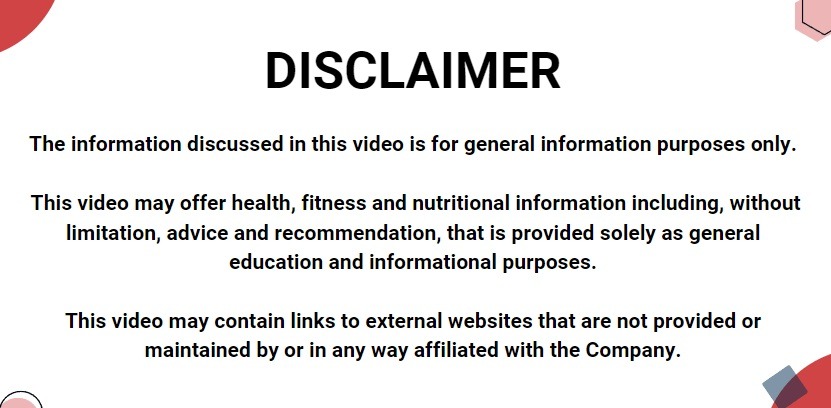
Why Business and Personal Development Coaches Need Disclaimers
Business and personal development coaches need disclaimers because disclaimers can help limit liability arising from the advice they give their clients.
For example, if you're a personal development coach, you may use a disclaimer to limit your liability if the advice or guidance you provide to a client does not produce the desired results.
You could also use a disclaimer to clarify that your services are not a substitute for legal, financial, or other professional advice. You might also use a disclaimer to protect your intellectual property rights, such as by prohibiting the reproduction or distribution of your materials without permission.
Disclaimers can also protect you from claims of negligence or breach of contract. Legal disclaimers can help business coaches manage risk and reduce exposure to potential legal claims.
Some disclaimers are even legally required in some regions, such as the U.S. FTC requiring the disclosure of affiliate link usage via a disclaimer, as well as having strict requirements for advertising and related disclaimers.
What Disclaimers are Best for Business and Personal Development Coaches?

A business or personal development coach might benefit greatly from a number of various disclaimers, depending on their specific needs and the risks and legal considerations involved.
Some common examples of disclaimers that a business coach might use include the following:
- Limiting liability in the event that the advice or guidance provided by the coach does not produce the desired results
- Clarifying that the coach's services are not a substitute for legal, financial, or other professional advice
- Disclosing any conflicts of interest that the coach may have
- Stating that the coach is not responsible for the content of any external websites or resources that they may link to or recommend
- Stating that if a client uses a particular product, service, or information, they are using it at their own risk
- Stating that there is no personal relationship and to clarify that the relationship is solely a professional one
- Notifying clients that you may earn an affiliate commission if they purchase a third-party product or service based on your recommendation
- Clarifying that the coach's endorsement of any products, services, or organizations does not constitute a formal endorsement or partnership
- Informing users or customers that the person or organization providing a particular product, service, or opportunity is not making any guarantees or promises about the level of income that may be earned from using them.
- Protecting the coach's intellectual property and copyrights, such as by prohibiting the reproduction or distribution of their materials without permission
It is essential for business coaches to carefully consider the specific risks and legal considerations that apply to their businesses and to include appropriate disclaimers as needed to help manage risk and protect themselves from potential legal liability.
Below we'll go over these disclaimers a bit more in-depth and provide examples of each.
Limited Liability Disclaimer
Businesses often use these types of disclaimers to limit the liability that could arise from the use of their products or services.
For example, a business coach might include a limited liability disclaimer in their contract with clients and inside their Terms and Conditions agreement that states the coach is not responsible for any loss or damages that may occur due to the coaching relationship.
This could include financial or physical losses or damages related to implementing the coach's advice.
Here's an example of a limited liability disclaimer from business coach Jay Abraham's website:
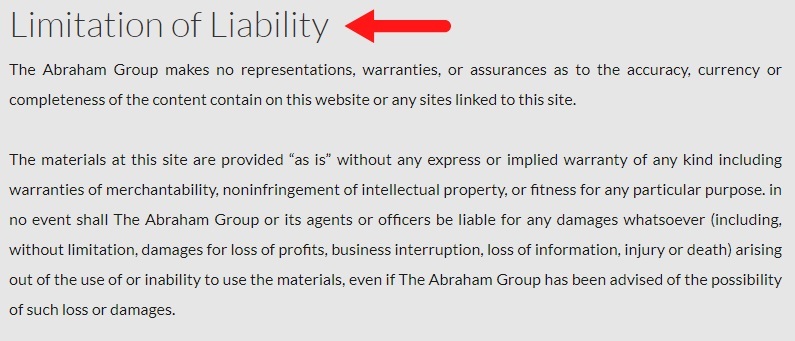
Legal Advice Disclaimer
A legal advice disclaimer is a statement that clarifies that the information or services provided by an individual or business are not intended to be taken as formal or personal legal advice.
This type of disclaimer is often used by coaches that provide information or services in a non-legal context, such as personal development coaching, to protect themselves from liability for any legal consequences arising from the use of their information or services.
For instance, a personal development coach might include a legal advice disclaimer in their contract with clients and on their website to clarify that their coaching services are not intended as legal advice.
Here is an example of this type of disclaimer from Next Level Coaching and Consulting:
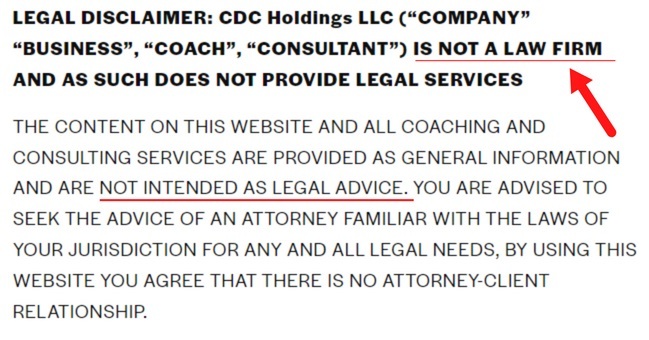
Conflict of Interest Disclaimer
A conflict of interest disclaimer is a statement used to disclose any potential conflicts of interest that an individual or business may have.
A conflict of interest takes place when an individual or business has a personal or financial interest in a situation that could influence their judgment or actions.
For example, a personal development coach might include a conflict of interest disclaimer to disclose situations where the coach has a personal or financial interest in a product or service they recommend to their clients.
The disclaimer would ensure that the clients are aware of any potential biases the coach may have.
Here is an example of a conflict of interest disclaimer from Life Coaching by Vivienne:
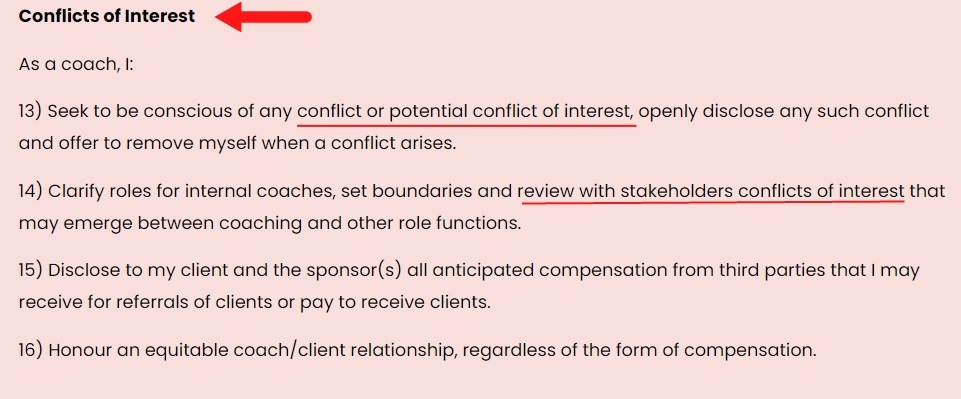
Third-Party Content and Links Disclaimer
A third-party content and links disclaimer is a statement that basically says that the content on websites or links you recommend is not your content, and you are not to be held responsible for it.
In other words, this type of disclaimer is used to protect an individual or business from being sued for damages or losses that may occur due to the use of third-party websites or resources they recommend.
Here is an example of a third-party content and links disclaimer from Coaching Genie:
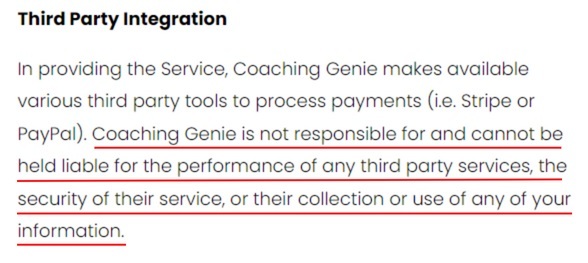
And here's how Wendy S. Axelrod notes that it isn't endorsing businesses by recommending them::

Use at Your Own Risk Disclaimer
Coaches often use these disclaimers to remind users that they are solely responsible for any risks or consequences associated with using the products or services.
For example, a personal development coach might include a use at your own risk disclaimer to make it clear that they are not responsible for any damages or losses that may result from the coaching relationship or the implementation of the coach's advice.
Here is an example of a use at your own risk disclaimer from Confide Coaching:
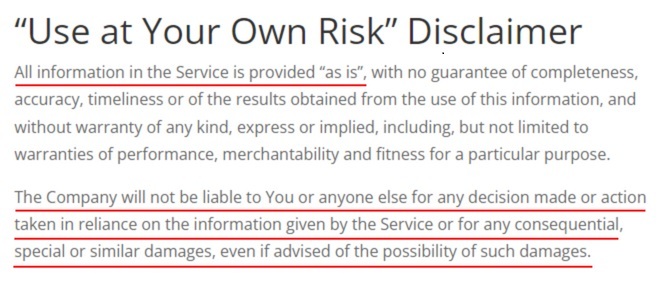
No Personal Relationship Disclaimer
This disclaimer clarifies that the relationship between coaches and their clients is purely professional and does not constitute a personal relationship. It would protect the coach from being sued for damages or losses that may occur due to the professional relationship and clarify that the coach is not responsible for any personal or emotional damages or losses.
Here's an example of such a disclaimer from ActualInfinity:
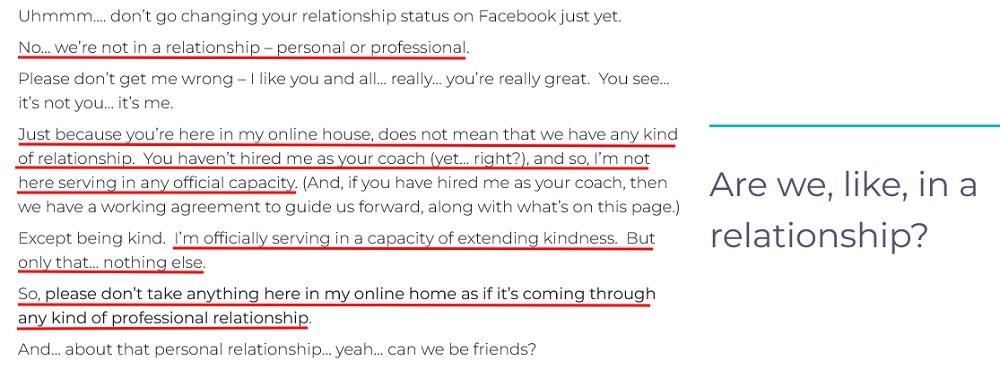
Affiliate Disclaimer
An affiliate disclaimer is a statement used when a business or personal development coach receives a commission or other form of compensation for recommending or promoting products or services of a third party.
The purpose is to ensure that clients are aware of any potential biases the coach may have when recommending those products or services, and to be transparent with the material gain the coach stands to make from the affiliate links.
Here is an example of an affiliate disclaimer:
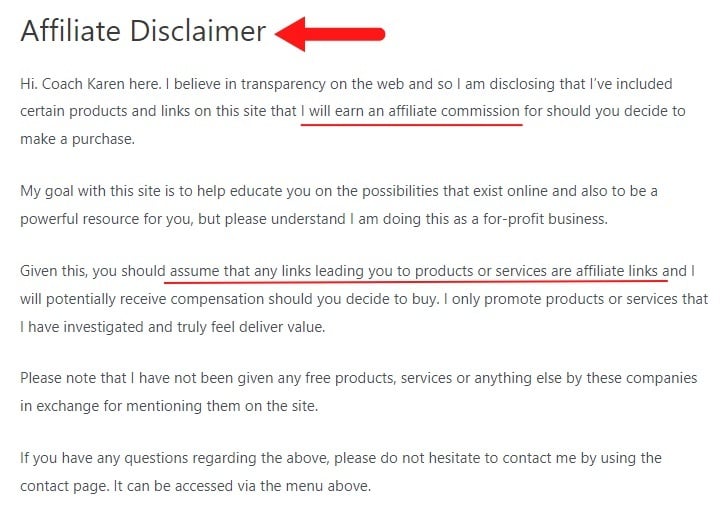
Personal Views Disclaimer
A personal views disclaimer is a statement that specifically states that the views, opinions, or recommendations expressed by a person or organization do not necessarily reflect the views, opinions, or advice of anyone else. For example, of your employer or organization you're a part of.
For example, if you're a business coach but also a professor at a university where you teach business courses, you should include a personal views disclaimer for your personal business coaching content to note that it is separate from your role at the university, and that your content is your personal views and not necessarily the views of the university.
Here's an example of what a personal views disclaimer could look like:

No Guarantee Disclaimer
This disclaimer explicitly states that the business coach using it does not guarantee or make any promises about results that clients may earn from using the coach's services or products.
It also clarifies that the coach doesn't guarantee the accuracy, reliability, or effectiveness of the provided information or services.
Here is an example from Wendy S. Axelrod:

Earnings Disclaimer
An earnings disclaimer lets your clients know that just because you're coaching them, they are not guaranteed to earn a certain amount of money or have a certain level of success, even if other clients of yours have had such successes and earnings.
Here's how Wendy S. Axelrod lets clients know this:

Intellectual Property Rights Disclaimer
This statement clarifies the ownership and use of intellectual property, such as copyrights, trademarks, or patents. This type of disclaimer is often used by businesses or individuals to protect their intellectual property rights and to prevent the unauthorized use of their intellectual property.
Business coaches typically use this type of disclaimer to make it clear that the materials and information provided by the coach, such as slides, presentations, or documents, are the property of the coach and are protected by intellectual property laws.
Here is a sample of an intellectual property rights disclaimer from Life Coaching with Fariya:
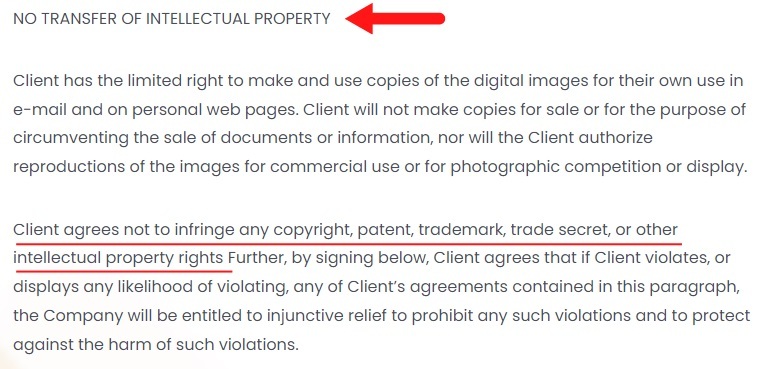
After you choose which disclaimers are best suited for your coaching business and draft them up, you'll need to display them in the best way for them to reach the most amount of people.
Where to Display Disclaimers for Business and Personal Development Coaches

There are several places where disclaimers can be placed on a business coach's website including on a website in a number of places, on a YouTube channel, or on an ecommerce store.
Here are a number of examples of excellent ways and places to display your disclaimers.
In Your Website Footer
The footer is a common place to include disclaimers (or links to them), as it is visible on every website page.
At minimum, this can be linking to your full disclaimer page within the footer, or it can be including the text of the disclaimer itself within the footer, if room allows.
Here's how Alexis Haselberger includes a link to her disclaimer in her coaching website's footer:
![]()
And here's how Au Naturale Nutrition includes at least partial disclaimer text as well as a link to the full disclaimer in the site footer:
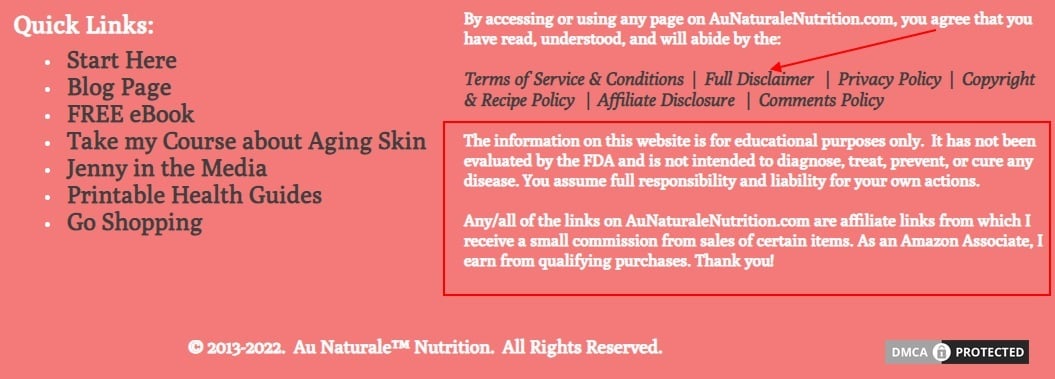
On a Separate Disclaimers Page
Some business coaches may create a separate page on their website specifically for disclaimers. This can be a good option if the website has a lot of different disclaimers that need to be included, as it keeps all of the disclaimers in one place and makes them easy for users to find.
Here's another example from Alexis Haselberger's website:
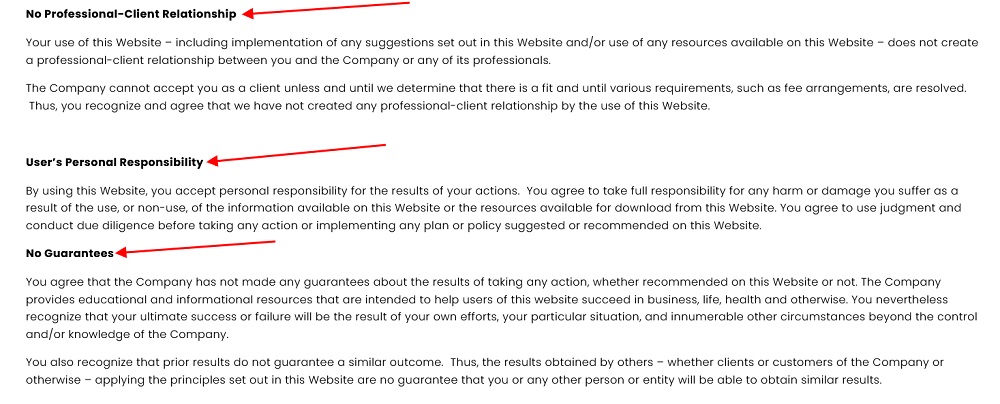
In a Terms and Conditions Agreement
It's very common to find disclaimers within a Terms and Conditions agreement, since these agreements are regarded as a place to put important information you want your clients, customers and users to know about.
Here's an example from personal development coach Domonique Bertolucci:

In Your Ecommerce Store
If you run an ecommerce store that sells things such as your own merchandise, books, recommended products, coaching sessions and more, this is a great place to display disclaimers. It's also a place to display an affiliate disclaimer if you sell merchandise via affiliate links.
For example, say you sell books on your most successful business techniques. You could put a no guarantee disclaimer in the listing for these books.
On Your YouTube Channel
It's very common for business and personal development coaches to have YouTube channels to promote their coaching and content.
You can display your disclaimers on your YouTube channel in a few places:
- In the video description text field
- In the channel description
- In the video itself as a text display
If you post coaching content on YouTube, here are some easy steps to follow to display your disclaimers with your videos.
Option 1: Add Your Disclaimer to the Video's Description
-
Log in to your YouTube studio account.
-
Go to Content and click on the Edit icon within the Video details window:
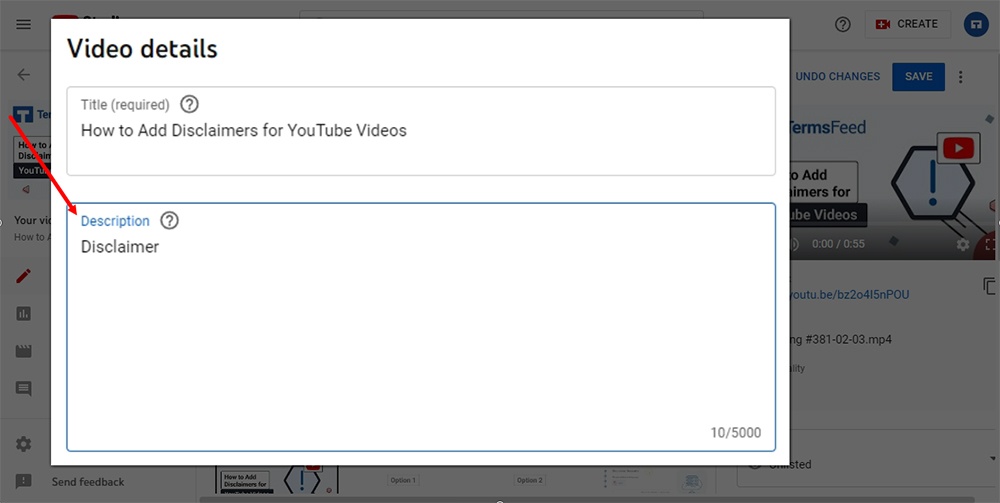
-
Add your Disclaimer text or enter the link to your Disclaimer web page:
To get a Disclaimer URL link, go to the TermsFeed Disclaimer Generator to create a Disclaimer and get the hosted Disclaimer URL.
Once you have a Disclaimer created by TermsFeed, click Copy from the Link to your Disclaimer section to copy the URL:
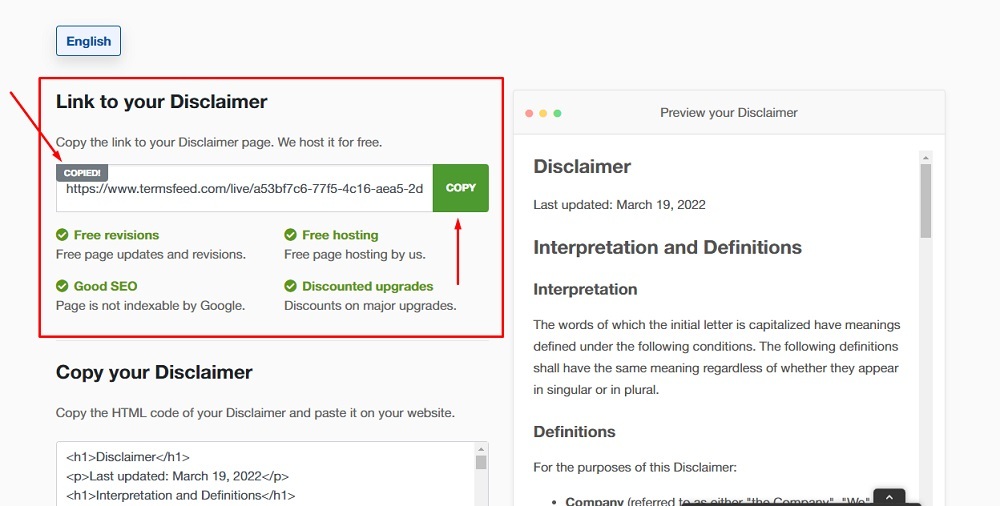
-
Paste your Disclaimer URL to the Description field:
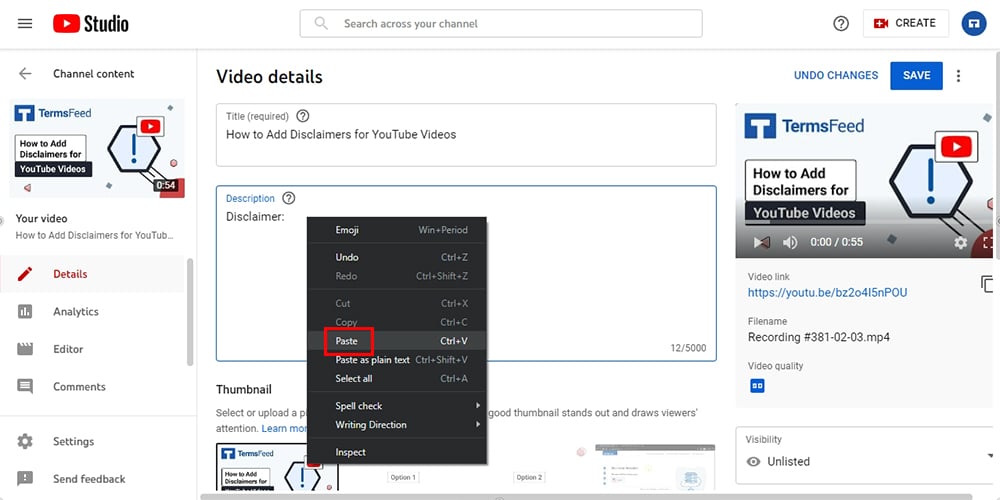
-
Click Save:
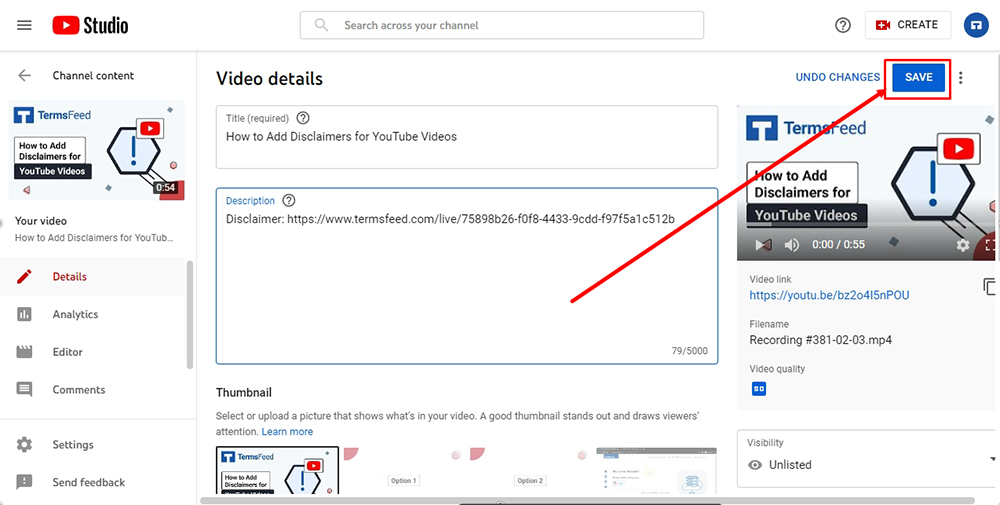
-
Click on the video to see your new updates applied:
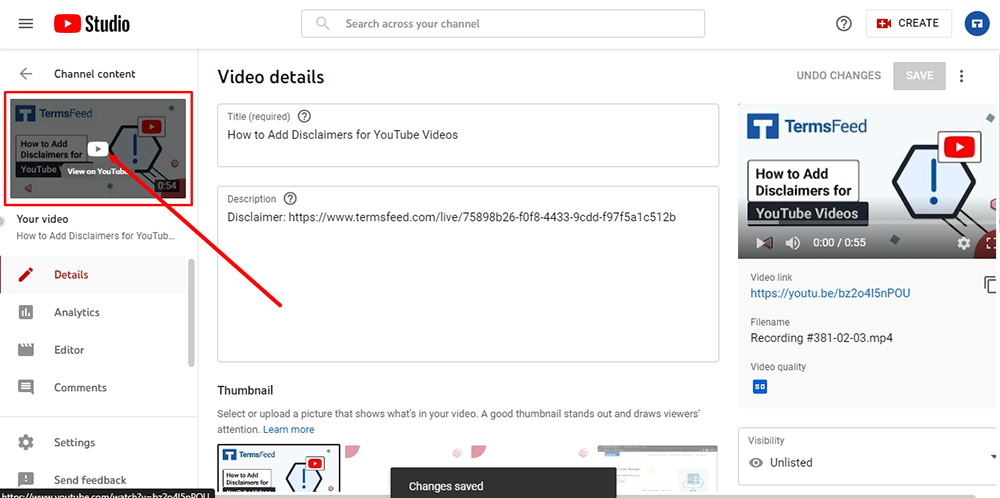
-
You're done! The Disclaimer will now be displayed in the description of the video on YouTube:
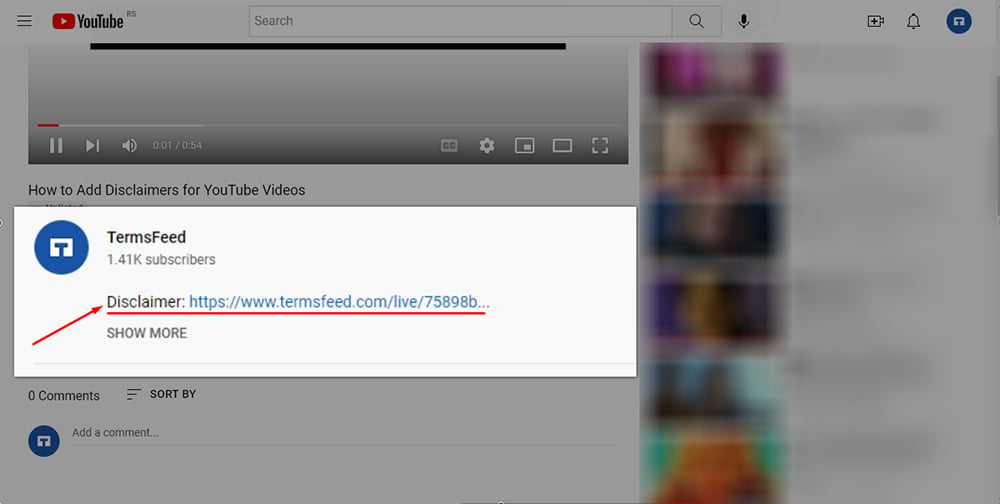
Option 2: Add a Disclaimer to the Channel Description Section
-
Log in to your YouTube studio.
-
Go to Customization:
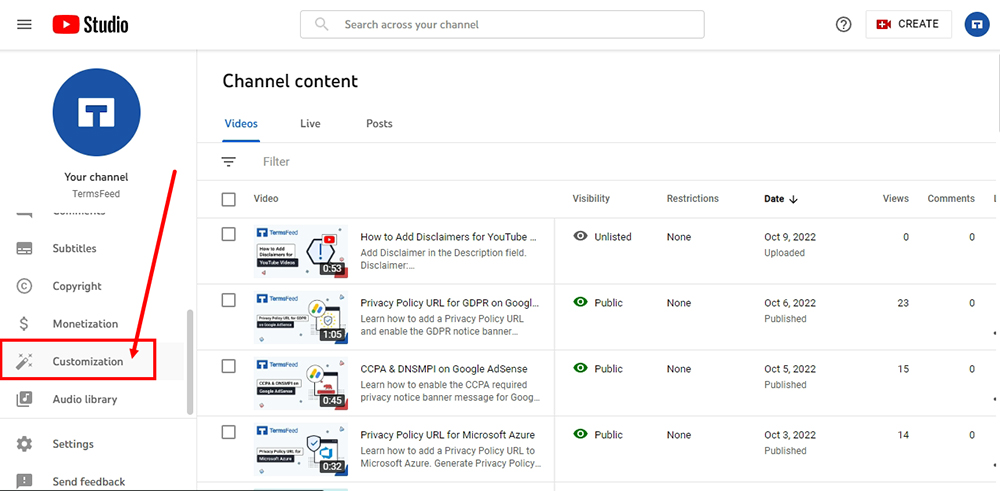
-
Switch to the Basic info tab, located under Channel customization:
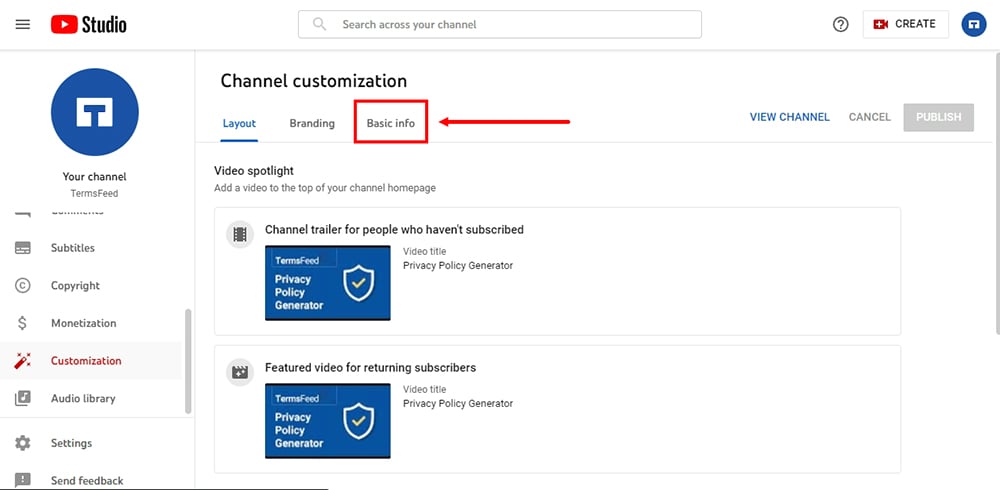
-
Add a link to your Disclaimer page in the Description field:
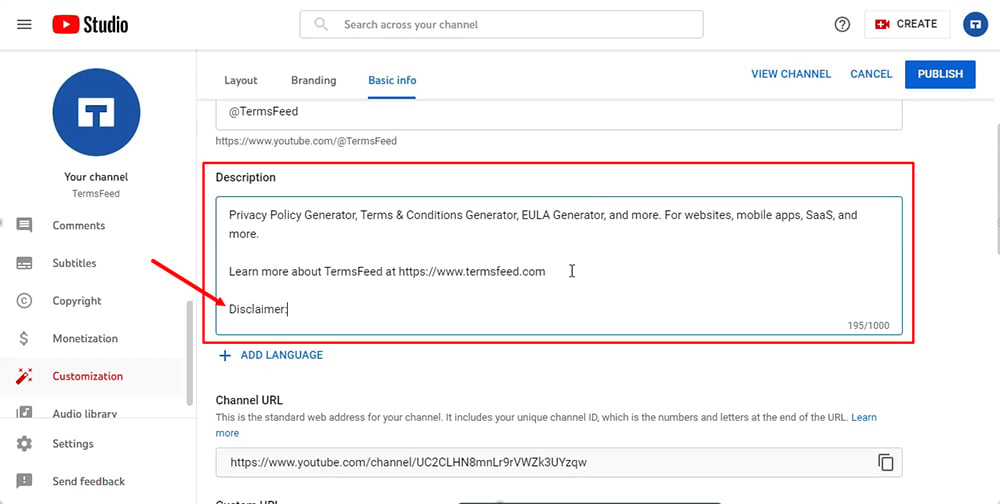
To get a Disclaimer URL link, go to the TermsFeed Disclaimer Generator to create a Disclaimer and get the hosted Disclaimer URL.
Once you have a Disclaimer created by TermsFeed, click Copy from the Link to your Disclaimer section to copy the URL:

-
Paste the Disclaimer URL:
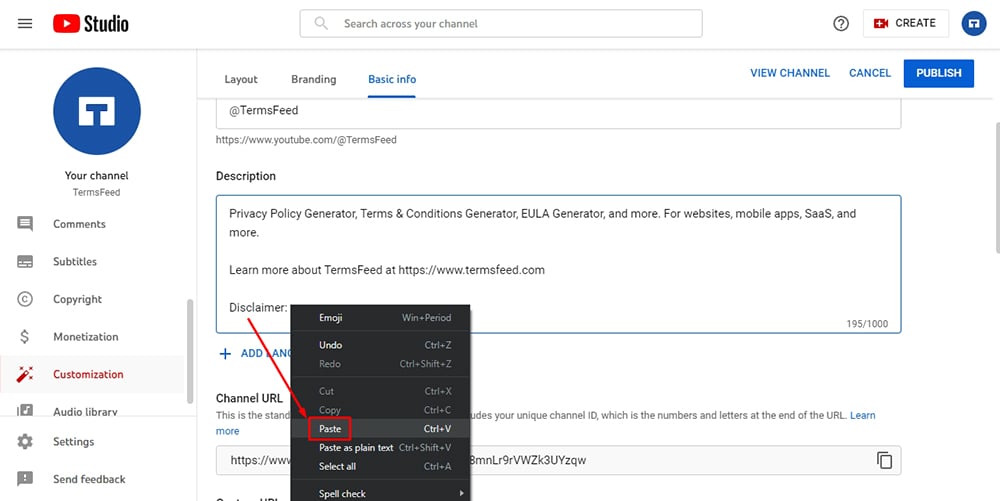
-
Click Publish:
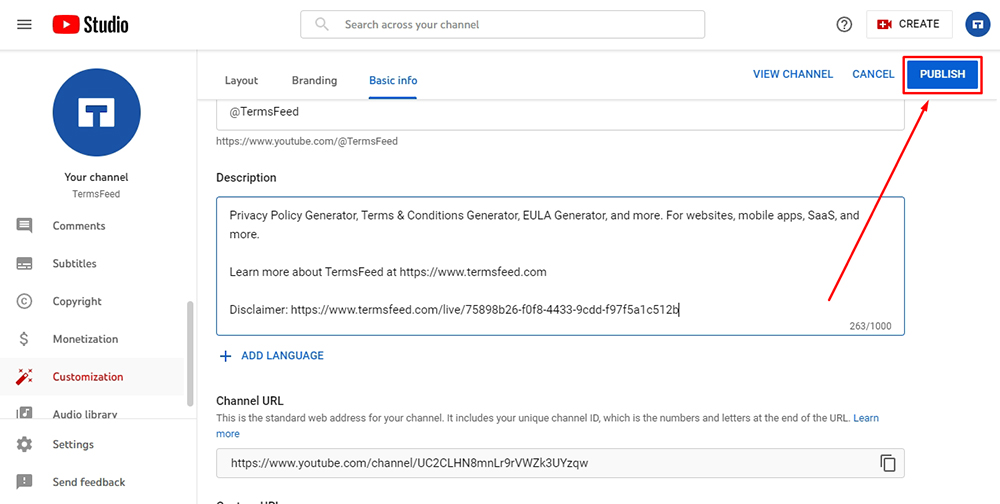
-
Click on Go to Channel to see the new update applied:
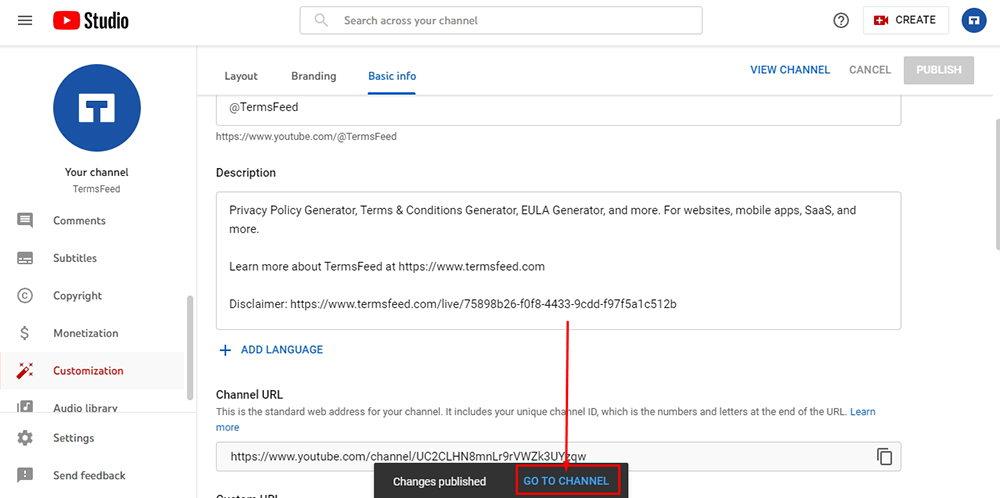
-
Go to the About section on your channel's page to see the update:
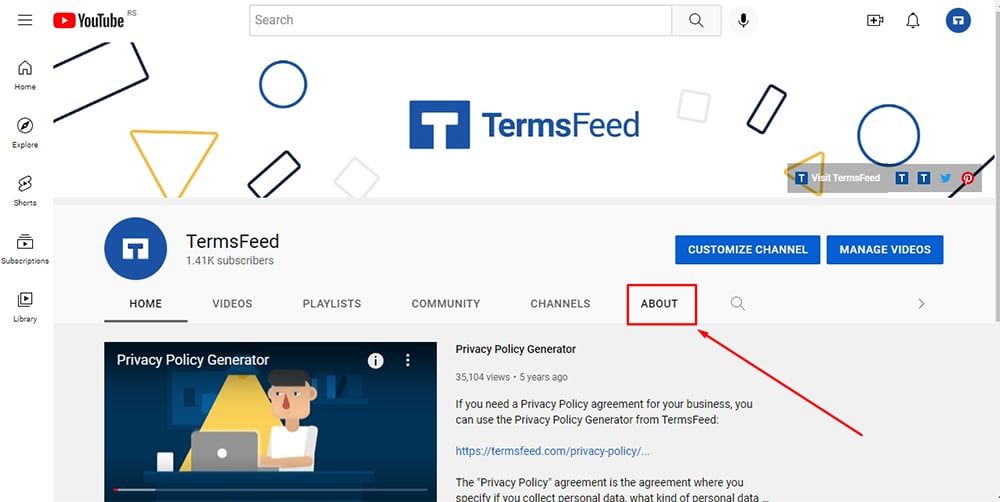
-
You're done! A link to your Disclaimer is now displayed as part of your channel's description:
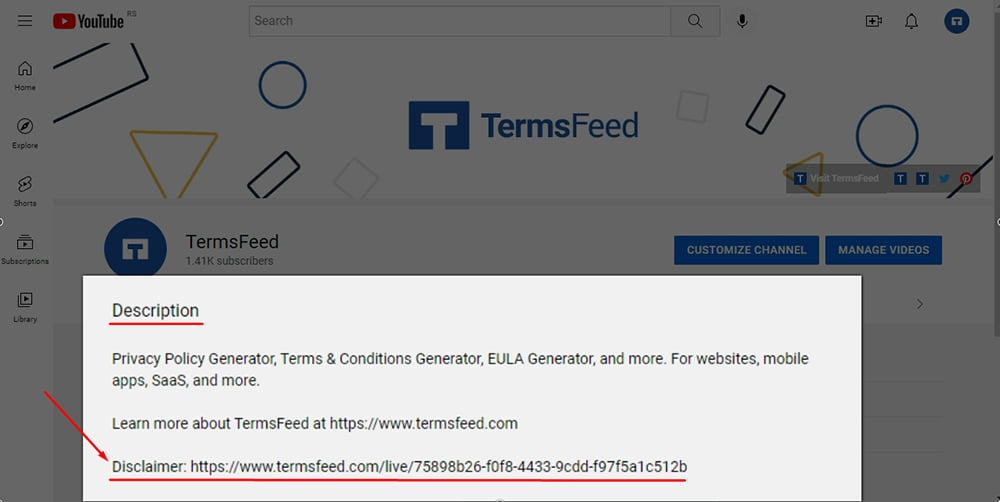
Option 3: Add Your Disclaimer within Your Video
You can add a Disclaimer as part of your video by integrating it directly into your video as a text screen:
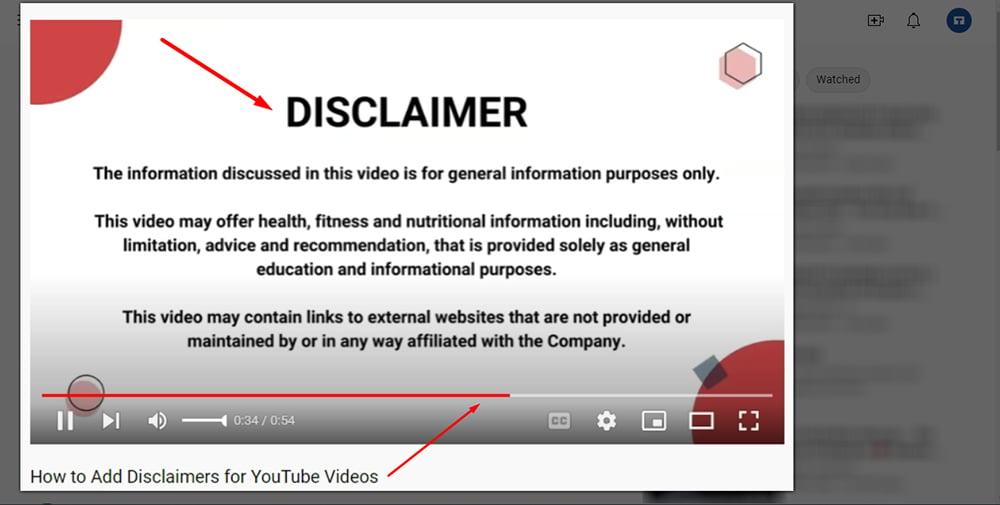
Summary
Disclaimers are statements used to protect individuals or businesses from legal trouble while also informing others about important pieces of information.
In the context of business and personal development coaching, disclaimers can be used to limit liability if the advice given does not produce the desired results or to clarify that the services provided are not a substitute for other professional advice.
Coaches can also use disclaimers to protect intellectual property rights, disclose conflicts of interest, and state that the coach is not responsible for the content of any external websites or resources.
Prominently display your disclaimers in areas that are viewed easily by potential clients, such as in your website footer, within a Terms and Conditions agreement, and on social media and ecommerce stores.

Comprehensive compliance starts with a Privacy Policy.
Comply with the law with our agreements, policies, and consent banners. Everything is included.
